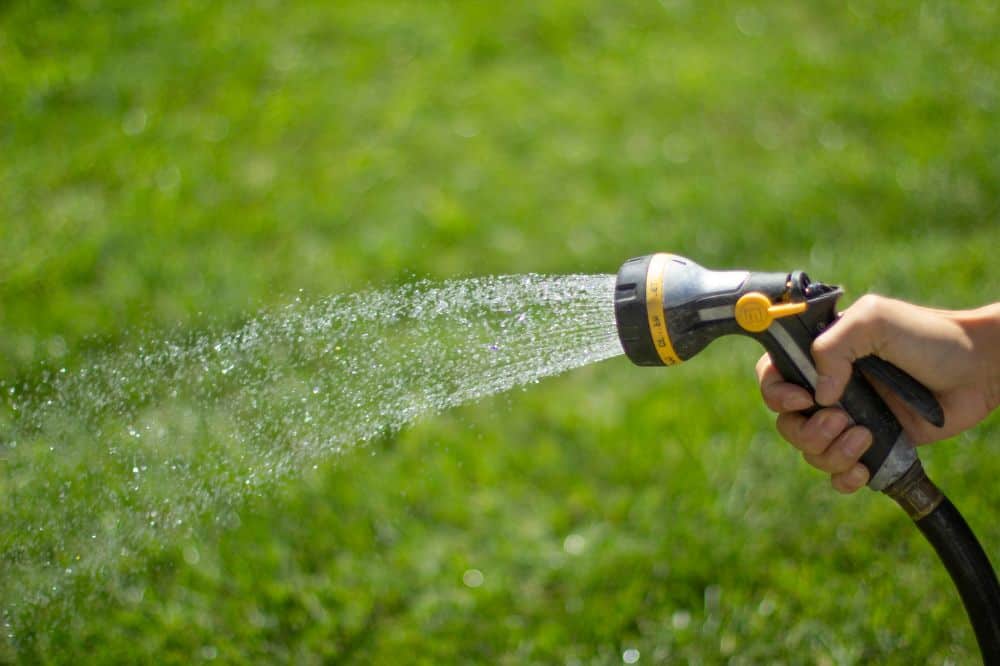How to water new turfgrass. (SOD)
Tuckahoe Turf Farms
on
July 31, 2024

How To Water New Turfgrass Sod
Proper watering techniques are a critical aspect of lawn watering, equal in importance to the issues of when to water, and how much to water. Here are several key factors to consider when watering your new turfgrass sod:
Avoid hand sprinkling because it cannot provide the necessary uniformity, as most people do not have the patience, time, or “eye” to adequately measure what is being applied across any larger areas of lawn. The only possible exception to this guideline would be the need to syringe the surface of the grass to cool it, or to provide additional water near buildings or other heat-reflecting surfaces.
Understand the advantages and disadvantages of different sprinkler designs the type of sprinkler that you select will determine proper use.
In-Ground Systems require professional design and installation and they require routine adjustments and regular maintenance to be most effective and efficient. The greatest mistake made with most in-ground systems is the “set it and forget it” philosophy that fails to account for the changing seasonal water requirements to maximize turf grown or even allowing the system to operate during or following a multi-inch rain storm. Another frequent problem is when heads get out of alignment and apply water to the sidewalk, street or house siding, rather than to the lawn.
Hose-End Sprinklers range in complexity, cost and durability, but are highly portable and can provide uniform and consistent coverage, when properly placed on the yard and adequately maintained.
Sprinklers that do not throw the water high into the air are usually more efficient because prevailing winds are less disruptive of distribution patterns, the potential for evaporation loss is reduced and trees, shrubs and other plants do not block the pattern (or are very noticeable if they do).
Several times during the growing/watering season, routine maintenance to check for blocked outlets, leaking or missing gaskets, or misaligned sprinkler heads is important, regardless of the sprinkler design.
Select sprinklers and systems for uniformity of coverage across whatever area they are designed to water. Inexpensive hose-end sprinklers and in-ground irrigation systems can provide uniform coverage, but they can also be extremely variable and inconsistent in their coverage patterns.
Verify watering uniformity can be accomplished with a very simple and inexpensive method that uses only 4 to 6 flat-bottomed, straight-sided cans (tuna fish, cat food, etc.), a ruler and a watch.
FOLLOW THESE STEPS:
Step 1
Arrange the cans at random distances away from any sprinkler, but all within the area you assume is being covered;
Step 2
Run the sprinkler for a specific amount of time, say a half-hour OR run the water until a specific amount of water is in at least one can, say a 1.5 cm (0.5 inches)
Step 3
Measure the amount of water in each can, checking for uniformity. Some variation is expected, but if there is a difference of 10% or more between any two cans replace or adjust the sprinkler or relocate the system. Use this same technique when you are dealing with slopes on your property as well. This measuring method should also be used across an entire lawn that has an in-ground irrigation system to assure maximum coverage and uniformity.
Watering difficult areas such as slopes and under or near trees requires some special attention to achieve the maximum benefit resulting in a beautiful lawn. You need to know the water requirements for the specific trees, as well as for the grass. Despite having deep “anchor” roots, trees take up moisture and nutrients from the top six inches of soil…the same area as the grass. Trees and turf will compete for water. Watering sufficiently for the grass may over-water some varieties of trees and under-water others. A common solution is to not plant grass under the drip-line of trees, but rather use that area for perennial ground covers, flowerbeds or mulch beds.
- Category: sod and sod installation, turfgrasses, TURF CARE
